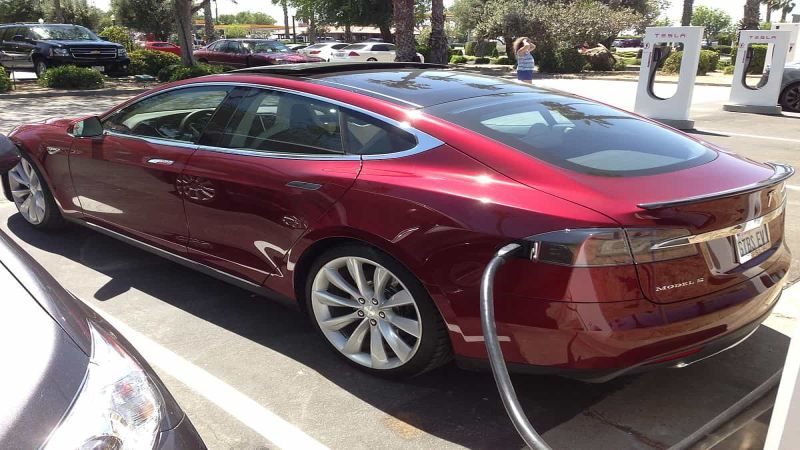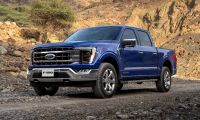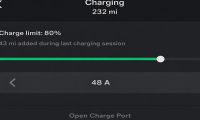With the recent and still changing conditions in the global auto market that includes a worldwide new car sales slowdown, a continued US uptick in truck and SUV purchases as opposed to sedans, uncertain US consumer confidence with talk of a 15% tariff of steel import duty, and 10% on aluminum, and the relatively low price of oil the last two years, has left a glut of late model used electric cars on the market for sale. And most of them are way undervalued.
This means that used EV deals are to be had if you know where and how to look:
- If you were contemplating on buying a new or used BEV or PHEV, now might be the time to snatch a used one at bargain prices.
- They are so cheap you will not find a gas variant or comparable gas car at these prices.
- Market conditions have made a glut of EVs possible.
- The federal tax credits severely handicapped these EVs’ resale values.
- Now is the time to buy a “green” car for less than $15,000 USD.
- A NIssan Leaf is the extreme with way too many of them: you can get one for about $10,000 USD.
- A BMW i3 can be had for more than half its new price.
- A Cadillac ELR new MSRP was $75,000 USD, used now average $25,000.
- The problem is the range on most are not that good so they make great commuter and high school and college kids’ cars.
- Tesla vehicles are selling top dollar on the used market and don’t apply here.
The global economy seems to be going through both growing pains and a foreign country backlash to Trump talk of imposing tariffs on metal imports. These changes are creating an environment of uncertainty that’s generating a crisis over consumer confidence that is now starting to affect selected markets, the car industry being one of them.
As the used car market prepares for millions of off-lease vehicles to be returned for the next chapter in their life cycle this year, a portion of those vehicles are some kind of electric car. Because many of these vehicles in their original two or three year lease terms, that are now being returned, were arranged with federal EV tax credit money, these vehicles face a severe devaluation in the used market, whether the actual vehicle was sold with the credit or not. It also didn’t help that oil prices over the last two years was relatively stable, because that market condition affected EV demand.
So here comes an invasion of used EVs onto the used market with bargain prices waiting for them, and a cheap vehicle that you won’t be able to find in a gasoline variant, or any other kind of car frankly, at these prices. “What you have is a glut of inventory in a low-demand environment,” Eric Lyman, chief analyst at TrueCar tells Consumer Reports. “That’s why we’ve got really low values on these vehicles.” Although many of these cars are first generation electrics with paltry ranges that make them great commuter or kids’ cars, if you were ever unsure if you could live with or adapt to the lifestyle change of owning or leasing an electric vehicle, this is the right time to buy or lease a used one on the real cheap to see if you can. And if still uneasy, just the PHEVs alone in this bargain market are worth looking at if you think you’re not ready for a BEV just yet. And remember, with a BEV you refuel with electricity at pennies on the dollar and with little or nothing under the hood or frunk to break down.
One Bad Turn Deserves a Good One: Slow New Car Sales Affects Used Market
People aren’t panicking yet, but they are certainly unsure about the future of things, especially the economy, and the first place they’ll look to hold back is with durable goods, cars purchases being one of them, new cars usually first as they try to find a bargain in the used market. The new car sales surge since the auto collapse of the Great Recession of 2008 was a gravy train no doubt, it nursed many global car companies back to health, some from bankruptcy to dominance like GM, but all good things must come to an end. According to fortune.com:
“In the last eight years, car sales have grown by an average of 5% per year, but in 2018 that rate is expected to slow to a mere 1.8% over 2017. The Wall Street Journal attributed the shift to global uncertainty over Trump’s trade policies, which are undermining consumer confidence, raising prices on raw materials, and creating new barriers to the import and export of vehicles.
‘It’s a bad time for sales to be down. Softening demand in Europe and China and flat demand in the U.S. comes as the Trump administration’s new tariffs have led to higher prices on steel and aluminum and car manufacturers are grappling with higher emissions standards in Europe and China. Those adjustments are costing companies tons of money as they invest in R&D and adapt to the market.”
What Tasty EV Models are Coming in with the Off-Lease Surge
Add to this the used EV off-lease surge. There’s a flotilla, a big one, of used cars of all stripes coming in this year finishing up their two or three year lease terms, looking to find a new buyer to take the home. According to Fortune, Cox Automotive’s Manheim Auctions, which operates 81 sites across the U.S. and 145 globally, and is a good place to find a cheap used vehicle discounted at a wholesale rate, predicts about 4 million off-lease vehicles returning this year, up from 3.1 million in 2016 and 3.6 million in 2017. Many of these cars will be BEVs like the plentiful and cheap 2015 Nissan Leaf first generation. In fact, according to Manheim, there will be three times as more Nissan Leafs coming in off-lease than there ever was, so at an average price of $10,745 USD anyone looking to buy more than one, i.e. for a fleet of them, now is a good time to make deals.
If you prefer a PHEV you’ve got good used car options. Also consider the now cancelled PHEV Cadillac ELR. It’s a Chevy Volt 2 door leathered up in Caddy style. The original MSRP was a staggering $75,000 USD because they priced it into the ridiculous strata of no one taking it seriously. Cadillac foolishly thought it could price point compete the ELR coupe with a Tesla Model S sedan. Besides the overpricing, nobody wanted a coupe anymore, it wasn’t even a convertible, and after much fanfare to debut the car, Cadillac suddenly one day cancelled it, adding to their history of chronically cancelling either coupes or some kind of electric or hybrid car. Oh boy. At the price you’ll certainly find for it now, you can take it very seriously. I mean, seriously. A price of $25,000 you can fetch for it now, makes it a great value and you’ll find many gently used examples out there, as it’s now actually cheaper than a new Model 3. The Base Single Battery Pack RWD $35,000 one. By an easy 10 grand (Model S. What was Cadillac thinking?).
The Tesla Exception
Speaking of Tesla, sorry, but there’s no surge coming for Tesla, so no cheap Tesla vehicles to be had. In the Tesla world and for the time being, there is no such thing as a cheap Tesla car, new or used, Base Model 3 included, as all Teslas are exacting a premium price to hold their value. The only exception might be on Hoovie’s Garage on YouTube to be lucky enough to find a used $85,000 Tesla Model S P85 in decent shape with 107,000 miles sold for $32,000.
Consider the EV Possibilities - The Advantages
So imagine yourself driving away in a nearly new electric Cadillac for only $25,000 or a nearly new BEV Nissan Leaf for only a mere $10,000 or even a nearly new electric BEV BMW i3, a $43,000 USD vehicle when new, for a measly $17,000. This makes the $10,000 Nissan a perfect vehicle if you want to experiment with a used electric car before you buy an expensive new one, as this is the perfect commuter you can plug into at work. If your business or company needs a few cars this is another way to buy a few Nissan on the cheap. The Nissan is also the perfect college and high school car for younger folks to crash land into someone’s yard with only 10 grand of equity invested in a nearly new vehicle if totaled. Before leaving for college with it if the car survives, they can commute to part time work after high school for the short trips this car is perfect for with it’s low range. Being an electric, you worry less about your kids being stranded on the side of the highway broken down, because there’s less mechanicals for the electric car to break down. All you have to worry is that the kids either recharge, or pay attention to don’t run out of range . . .
Speaking of your kids, one of the biggest selling points of buying one of these off-lease surge cars for them is that for at least $10,000 you are buying a nearly new car with the most state of the art vehicle safety features that you’ll be lucky to get only a few of them had you purchased an older car for your son or daughter. These cars all have full curtain all around airbags, stability control, antilock braking, in the case of Cadillac, lane departure warning and passive emergency braking, all insurance discounts. Should you decide to pay extra for a la carte services like roadside assist in case of emergencies involving your teenage child, things like Onstar for Cadillac, or BMW Roadside Assist are available. An older used car for ten grand doesn’t have such things.
Speaking of roadside assist, because there’s less to break down because there are way less moving parts to an electric as opposed to a gasoline car, BEVs are considered more reliable than gas cars. Studies have shown that while the lithium ion batteries do degrade over time, BEV batteries have longevity that in most circumstances you needn’t worry as the car starts to advance in age should you keep it. As a late model used with the downgraded value factored in from the tax credits, you’ve already saved a ton of money in lost resale value had you purchased new. The fuel costs in electricity are the selling points to a late model Nissan EV as Consumer Reports explains:
“With an EV, shoppers will certainly save money on gas, but charging their new EVs will cost them money, whether through higher electric bills or at public charging stations such as Chargepoints. Overall, though, they’ll pay an average cost per mile of only around 3.5 cents. That’s just over $1 for 30 miles; if a comparable car gets 30 mpg, the gallon of gas it would take to go that far would cost about $3.5”
So with the car equity steeply discounted, with low electricity costs of around 3.5¢/mile, the operational costs over the life of the car pays for itself. The only other expense you have to consider for the car is insurance and a home or destination charger, which on the cheap can cost as little as $200-300 at Costco. Add cost of electrician for installation if not DIY.
The Disadvantages of Buying Used Electric Cars
There are drawbacks to buying these off-lease EV cars, and while they are great very tempting deals so worth it, you still have to carefully consider the disadvantages. So if you never have driven a BEV, that’s a battery electric vehicle before, you need to read and listen carefully here:
Disadvantage: Lifestyle Change
Owning and driving a battery electric car is a lifestyle change. Trust me as I write that it won’t permanently crimp your style, but for some it requires some getting used to. That dynamic you once had with your gasoline car that you can go anywhere your want, when you want, how you want, that all you have to do is go to the gas station and gas up if you run low on gas, IS OVER. OK? Especially if you purchase one of these first generation low range EVs for you or your child to eventually designate it your primary source of transportation.
Disadvantage: Need to Always Plan
Moving forward, when you leave your home or office with your BEV and you plan to make more than one stop, I WROTE MORE THAN ONE STOP, to not make a beeline destination to the next place to be sure of the miles covered, you then need to plan to make sure that you’ll have enough range without recharging to make it through the trip without the interruption. You especially need to do this with an older first generation car that only has a range of less than 100 miles and your otherwise one stop beeline trip is, say 30+ miles each way. You’ve now added at least one other destination, and you have to allow for things like extreme weather either way to keep the heat or the a/c on, and more importantly things like sitting in rush hour traffic longer than anticipated that eats up your precious little range. BE CAREFUL.
Having a BEV means that you now have to carry a charger app on your phone and another secondary separate charger app on your phone as well, that’s two of them, BOTH on your phone. One will be your primary charger map app to find the nearest charging stations when you need to charge WHEN PREPLANNING A TRIP. Not during the trip. The backup is in case the primary for some reason is not working and you’re in he middle of nowhere to need recharging ASAP, has the wrong information, or you want to cross check or see features that the other app doesn’t have. These reasons are all important.
Disadvantage: You Can’t Be Recharge Lazy and Can’t Run on “Empty”
Because your newer BEV car has only say, 50 miles or so of range, especially when running errands in town, and especially when long distance driving, you have to make sure every mile during the trip counts. You never want the fuel gauge to hang around empty like you used to do with your gas car before you finally went to the gas station. NEVER AGAIN, especially with an older BEV model whose range may get shorter and fuel gauge accuracy may not be acumen. And you always want to have a little range in case of an emergency you need to go to or drive away from. So having these low range cars can be a pain if you let them be one. They require constant retopping at the next destination ideally, as is the case of the Nissan, you’ll have the maximum range with maximum options in case you need them. Never be lazy and park the car unplugged at home or office or not parked at a charging station when on a trip. Something will sure to happen one day, God willing not awful, for you to regret doing that for the rest of your life, for that extra 20 minutes of range you needed for an emergency but because you were lazy on that faithful day, you didn’t. Trust me. Keep your short range BEV fully charged whenever possible.
Disadvantage: Exercise Caution Doing Prolonged Driving with Leaf
Short range BEVs were not meant to be driven on long distance trips. This is a controversial statement, but remember I was once a police officer to deal with all the consequences of the kind of circumstances a BEV can go through when a car overheats or runs out of fuel at the side of the road. You or your family are going to use the car for these purposes anyway, on a few occasions at least, so every once in a while you will take your Nissan Leaf on a longer distance trip it usually doesn’t do. It isn’t designed to that but that’s what cars are supposed to do, which makes me frustrated with Nissan. Be careful and be prepared.
The Nissan Leaf in its first generation was purposely designed to be strictly a commuter car with its less than 100 miles of range. Its batteries are not liquid cooled, they’re air cooled from the a/c air blowing on them that also cools the cabin. Along with the tiny battery these cars are notoriously known for, air cooling was supposed to be a cost saving measure. The idea was after the morning drive you’d park your Leaf at the office or home, etc. and plug it into a destination charger for the cells to slowly refuel while the batteries are also cooling as the destination charger is heating up the tray. The next trip probably won’t be until the return trip late afternoon for all this to balance out. Like your cell phone, there are two occasions when a lithium ion battery gets extremely hot: when we use it for prolonged periods of calls, and during recharging.
The Leaf was not designed to do what the Porsche Taycan is designed to, which is why it took so long for the car to be developed: to drive on an interstate for a prolong period at sustained high speeds like a gas Porsche can do, and then roll into a rest stop supercharger and quick refuel for 180 miles for 40 minutes. Leave, and resume high speed driving. Do this to an older Leaf, you risk the tray catching on fire or having the car go into fail safe mode when overheating. Both not good.
If you need to drive a short range BEV for a prolonged period, you really do need to read and follow the instructions in your owners manual. In fact I’ve learned in my journey as the electric vehicle correspondent here, that all electric car owners really should be reading their manuals. They do not, especially Tesla owners. I tried to warn owners in a Facebook Pages Group about the flaw in AutoPilot’s system, the famous one captured on YouTube taken right out of the owner’s manual. I was excoriated until a versed owner produced a copy of the passage to shut them all up. The funny thing was, that they all sounded like climate deniers as they wanted me to produce “more empirical data” so they can make up their minds. So read that manual. You should be taking more frequent breaks on your trip to let the batteries cool. Unless otherwise instructed, I would refrain from using a supercharger if the connection fits. One thing I have noticed is that owners are retrofitting their cars with improved battery cooling. I hope one day these batteries become cheaper so these owners can extend their ranges with bigger ones.
Disadvantage of PHEVs: Why are They Still Here?
For me, hybrid PHEVs are double trouble. Great as a warranty vehicle but once that expires they become a dealer money maker. They are the reason dealers across the country keep them so that their service departments continue making money in repairs. Some of you know how I feel about PHEVs. It’s for the same reasons why Europe is now banning them as well with gasoline cars.
So this is why I say a hybrid is double jeopardy, and if you decide to buy one instead of a BEV, you need to be careful with reliability and repair costs. Factor in the fuel cost of electricity and gas for PHEVs as they still have a gas engine that could break down, in fact all hybrids because they have at least two propulsion systems. This means they have twice the chance to break down, which is why dealers love them and don’t want to get rid of them, as they have no use for BEVs and see no advantage in their business model of having low maintenance like BEVs in their repair shops.
The only major factor to consider when purchasing these BEV cars is that because most of them are first generation models in a field experimental phase, many of their ranges are paltry at less than 50 or 100 miles at a charge. They need constant recharging to top off to keep them at maximum range. .
Consumer Reports Preferences
So here’s a rundown of Consumer Reports lists of electric cars you should take a look at when shopping around in the lots of those surge of off-lease vehicles.
None of the first-generation EVs hitting the used-car lots in big numbers earned a Consumers Reports recommendation. But they did find things to like about every model out there. They weren’t too thrilled with Leaf’s failure in the offset crash which led to them to pulling their Leaf recommendation, but they did like the Leaf’s reliability and comfort. And a customer survey of Leaf customers concurred with the reliability.
They found the BMW i3, Chevy Volt, and Volkswagen eGolf fun to drive. Among newer electric and plug-in hybrid models, CR has recommended the Leaf, the Chevy Bolt, the Honda Clarity, and Tesla’s Model S and Model 3. For PHEVs CR suggests the Ford Fusion Energi and the Chevy Volt.
What do you think of these bargain basement EVs available for sale? Let us know below!













Comments
Junk ussaly is cheap
Permalink
Junk ussaly is cheap